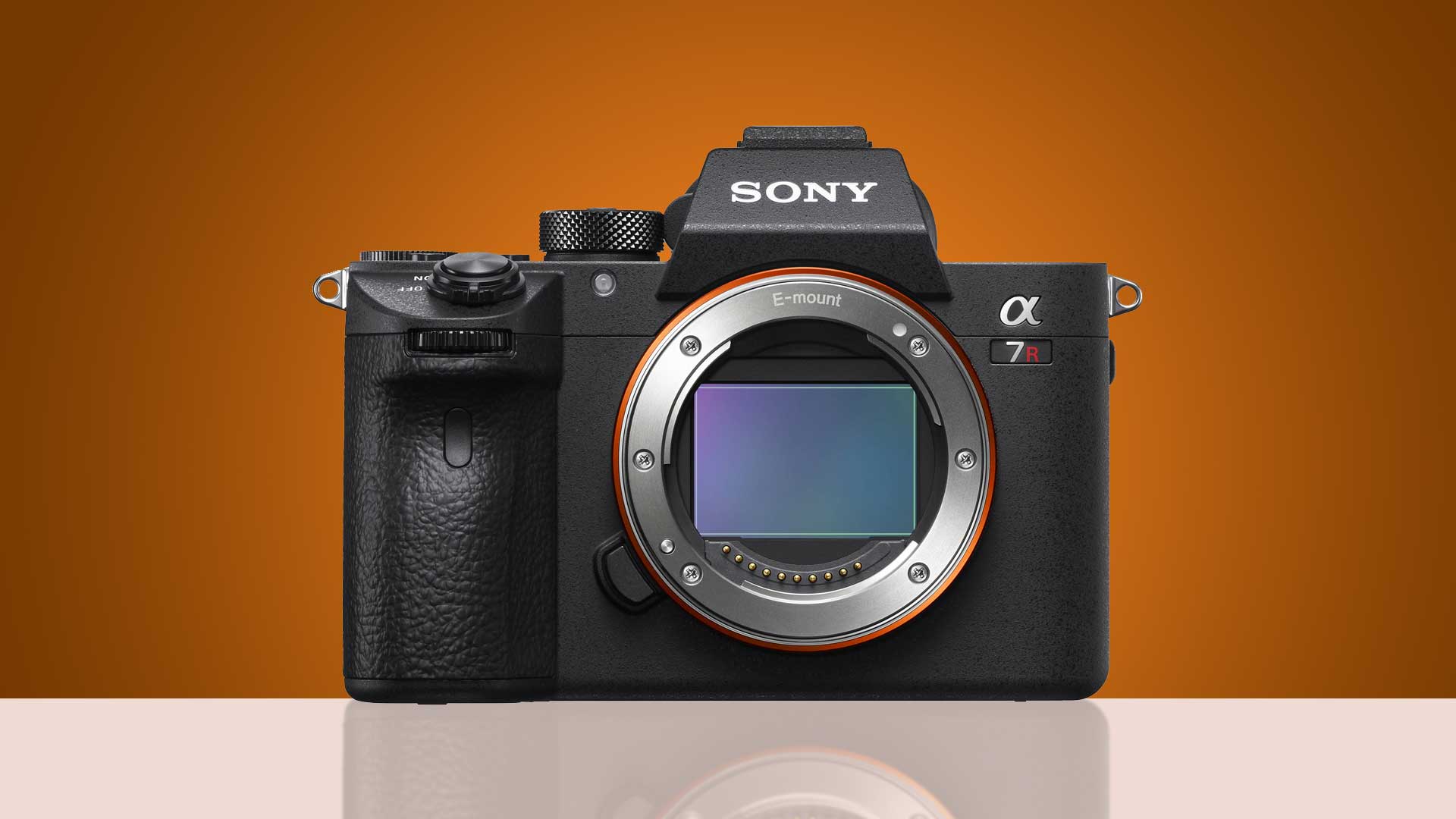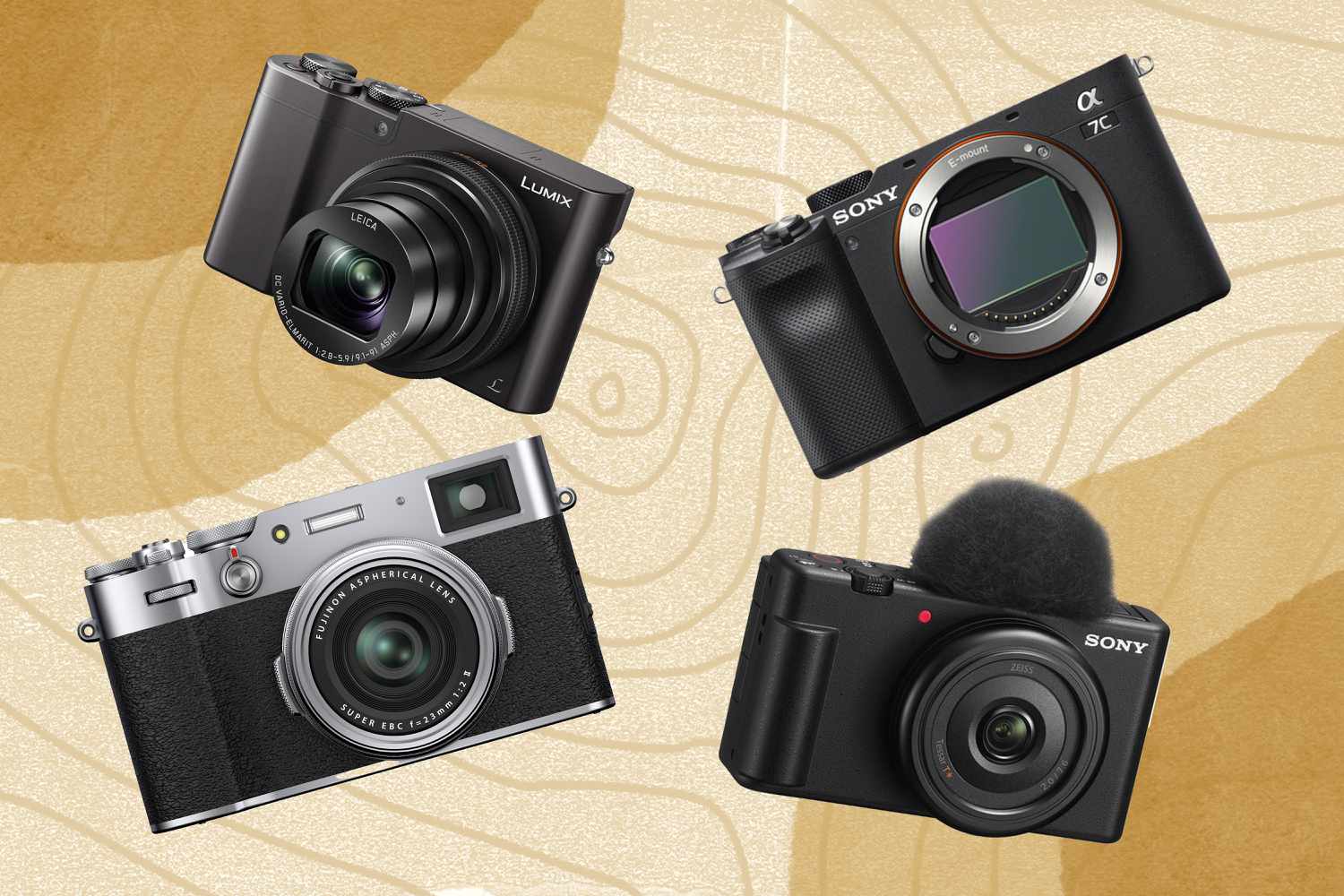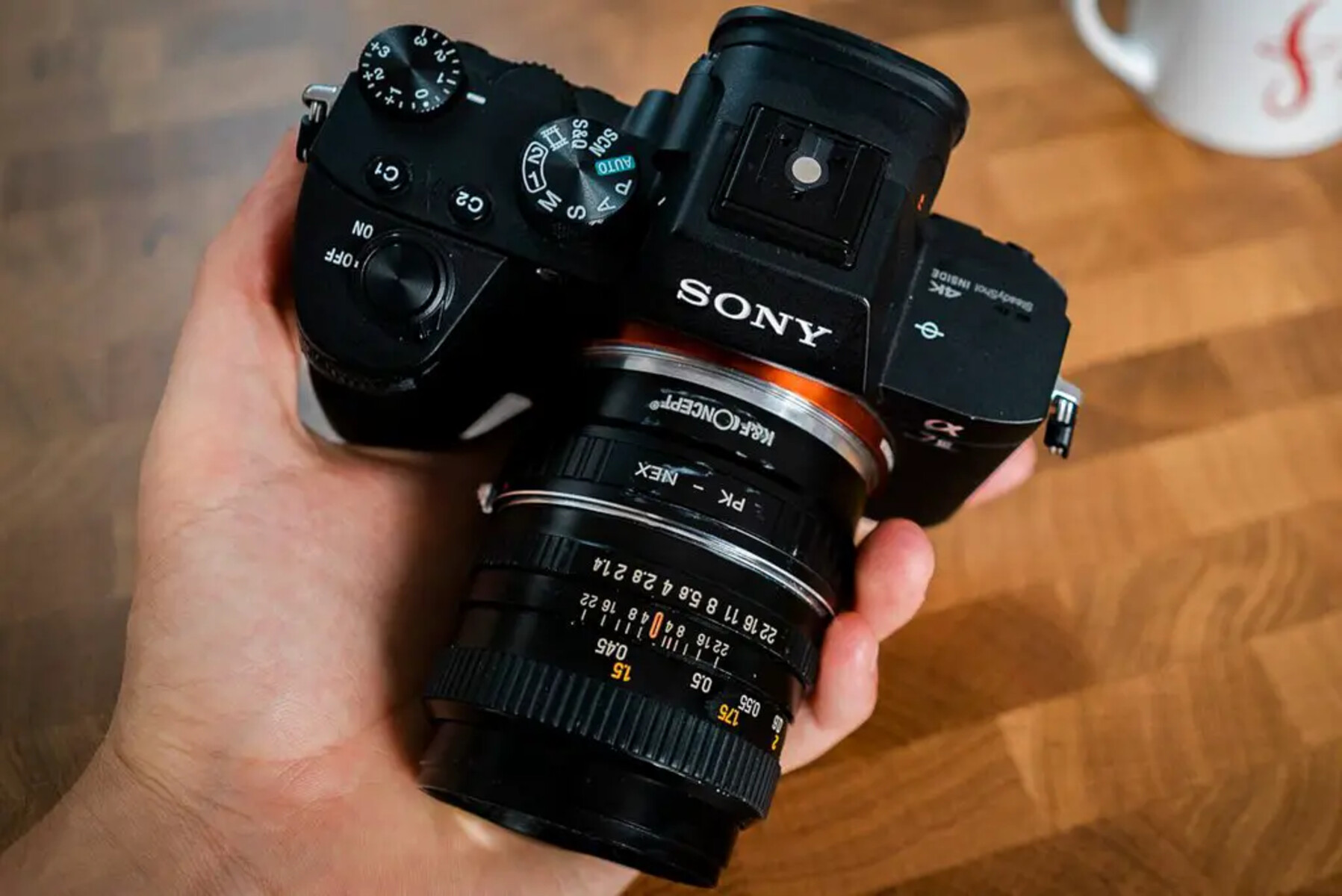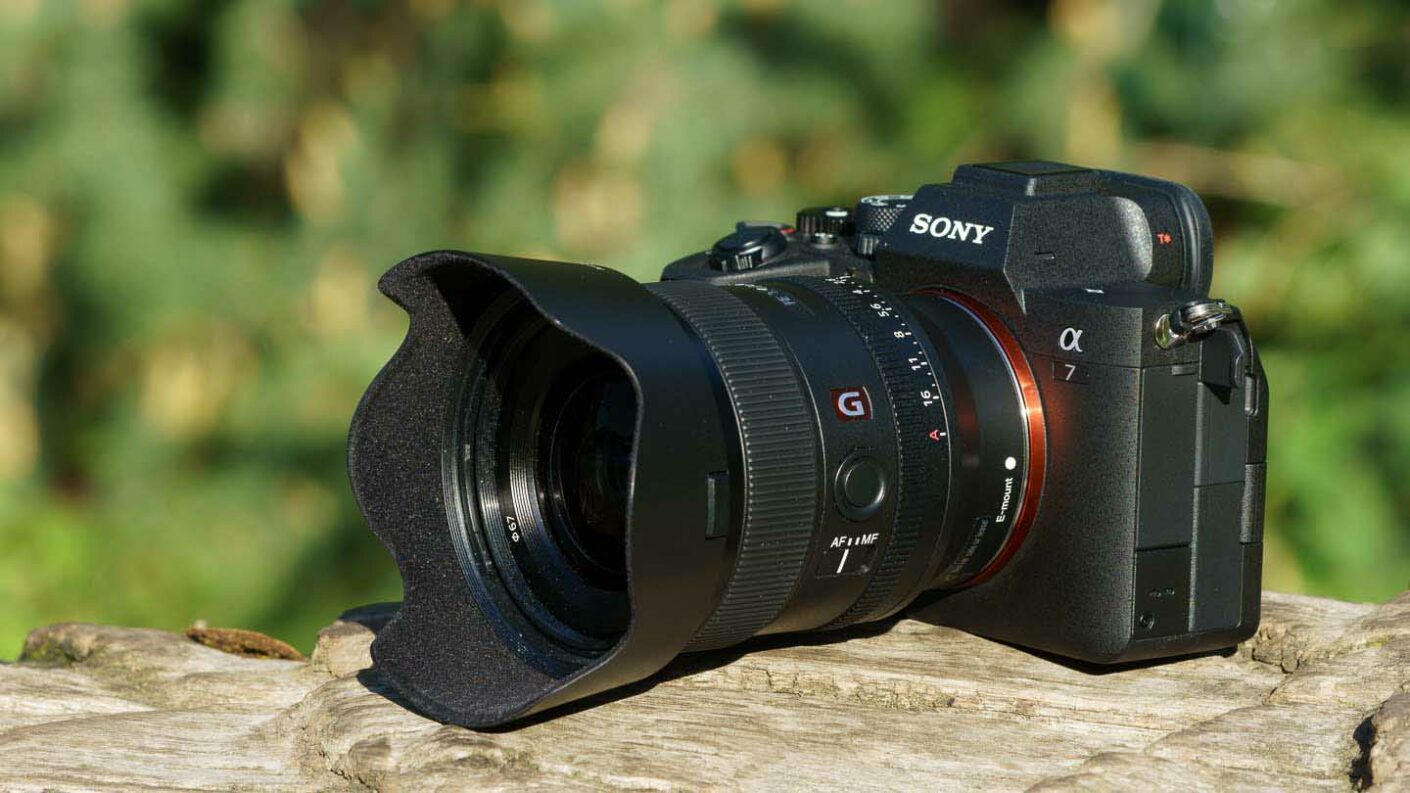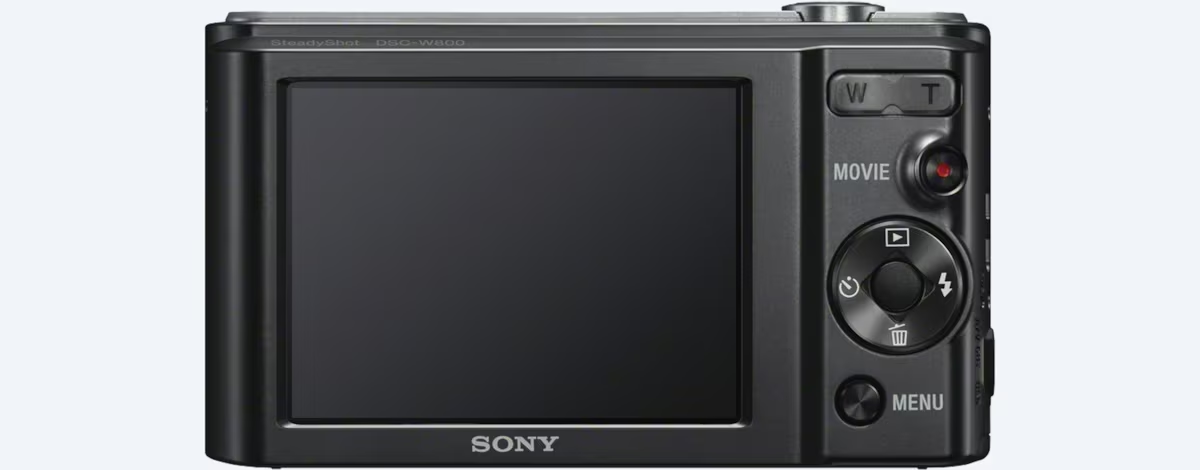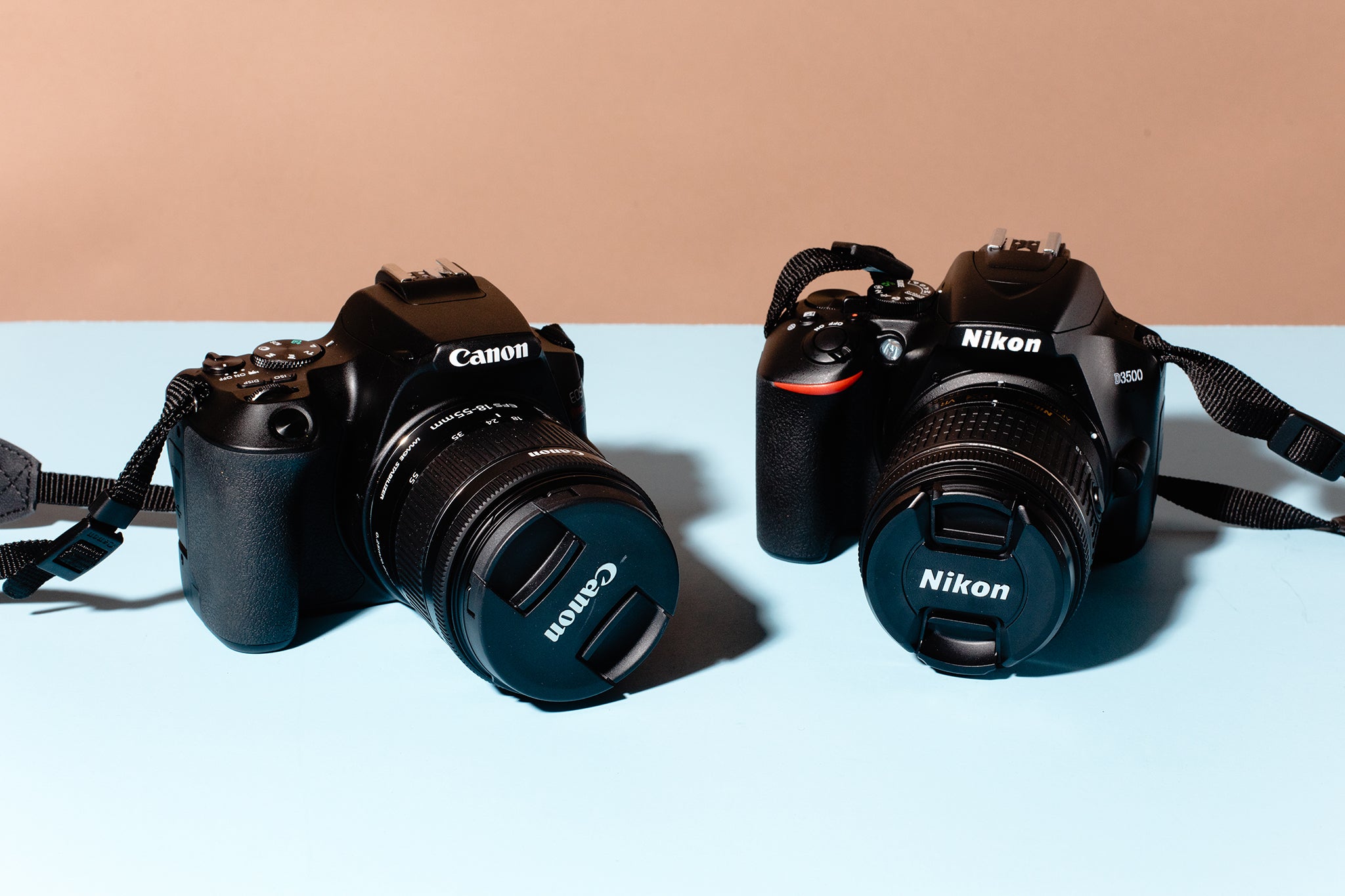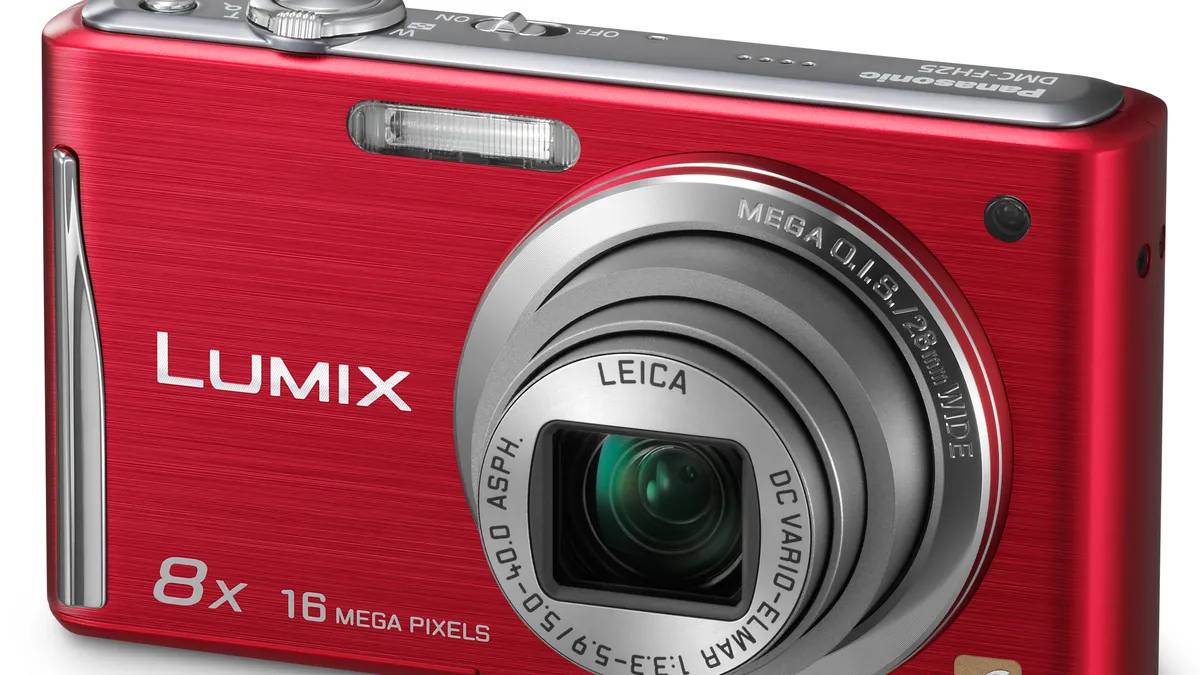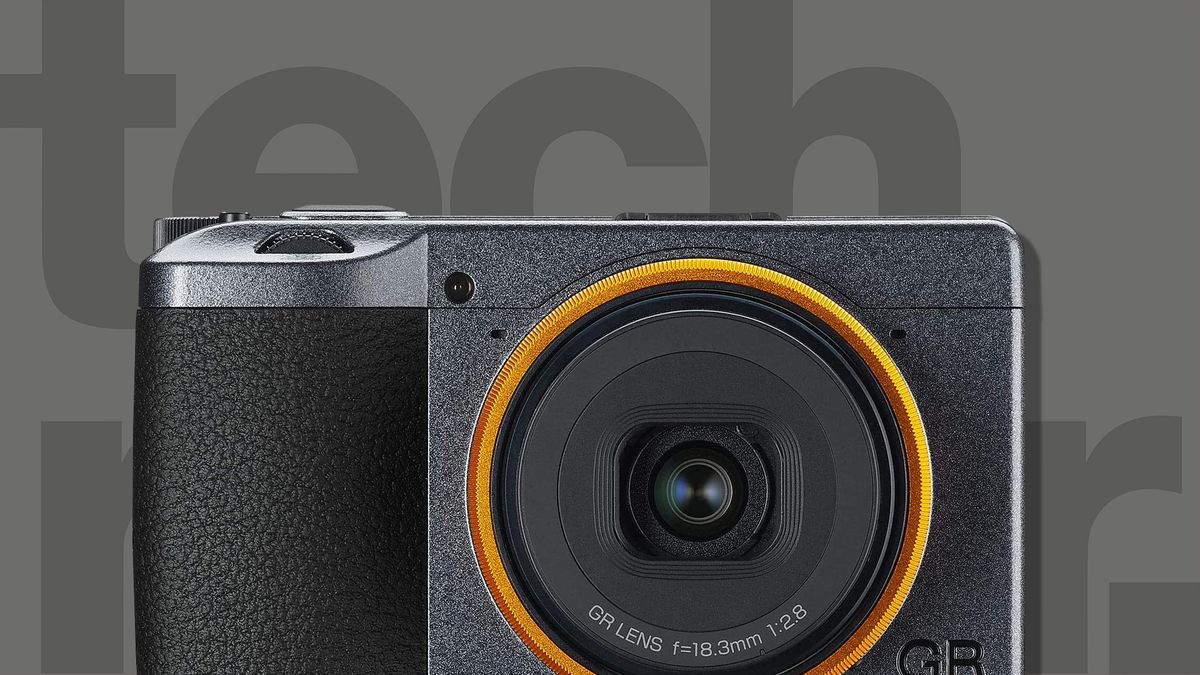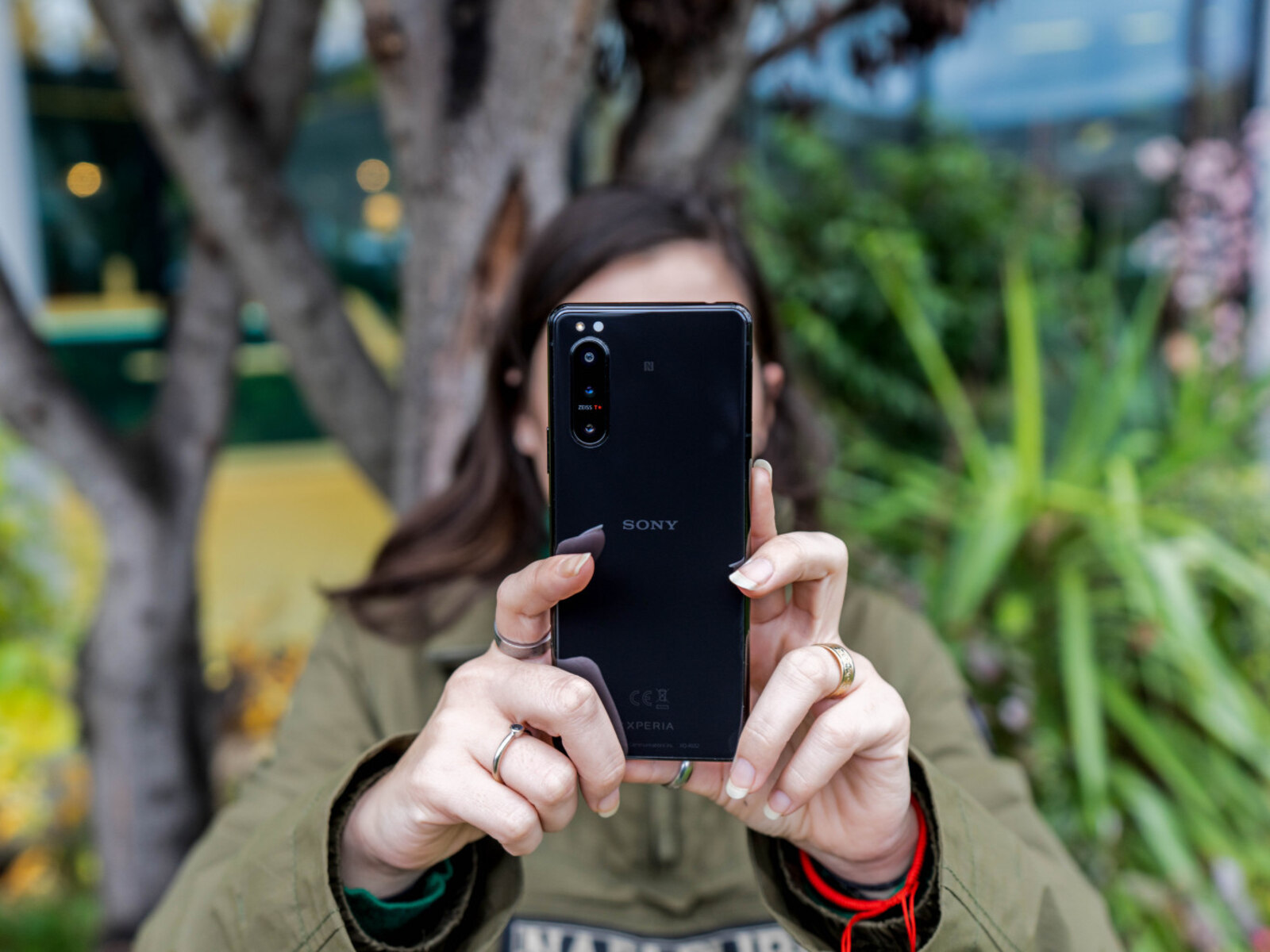Introduction
Sony has long been a leader in the digital camera market, offering a wide range of high-quality products suitable for both amateur and professional photographers. With so many options available, it can be overwhelming to determine which Sony digital camera is the best for your needs. Whether you’re a photography enthusiast looking to upgrade your gear or a professional seeking a reliable tool for capturing stunning images, it’s important to consider several key factors before making a decision.
When it comes to choosing a Sony digital camera, it’s essential to find a balance between functionality, image quality, and price. Each photographer has their unique requirements and shooting style, so what might be the best choice for one person may not necessarily be the ideal option for another. By understanding these crucial factors, you can make an informed decision and select a Sony digital camera that meets your specific needs.
In this article, we will dive into the essential factors to consider when choosing a Sony digital camera. We will explore the importance of sensor size, megapixel count, image stabilization, ISO range, autofocus system, video capabilities, and connectivity options. By understanding these features and their impact on your photography, you can narrow down your choices and find the best Sony digital camera that suits your requirements.
Furthermore, we will also provide a curated list of the best Sony digital cameras in 2021. These cameras have been chosen based on their overall performance, image quality, features, and user reviews. Whether you’re a professional photographer or a casual shooter, these cameras offer outstanding performance and cutting-edge technology to help you capture the perfect shots.
So, let’s delve into the world of Sony digital cameras and discover the factors that will help you make an informed decision.
Factors to Consider Before Choosing a Sony Digital Camera
With the wide range of Sony digital cameras available, it’s important to consider several key factors before making a purchase. These factors will help you determine which camera best suits your needs and preferences. Let’s explore these factors in detail:
- Sensor Size: The sensor size plays a crucial role in determining the image quality of a camera. Generally, larger sensors tend to capture more light, resulting in better low-light performance and improved dynamic range. Sony offers cameras with various sensor sizes, from full-frame to APS-C and smaller sensors for compact cameras.
- Megapixel Count: While the megapixel count is not the sole indicator of image quality, it does play a role in determining the level of detail captured in an image. Higher megapixels are beneficial if you plan on printing large photos or cropping extensively without losing too much detail.
- Image Stabilization: Image stabilization technology helps reduce blur caused by camera shake, resulting in sharper images. Sony incorporates image stabilization in some of its cameras, either through optical stabilization in the lens or sensor-shift stabilization in the camera body.
- ISO Range: The ISO range determines the camera’s sensitivity to light. A wider ISO range allows for better low-light shooting without excessive noise. Sony cameras offer varying ISO ranges, with some models capable of shooting at high ISOs without significant degradation in image quality.
- Autofocus System: An advanced autofocus system is crucial for capturing sharp and well-focused images, especially when photographing fast-moving subjects or in challenging lighting conditions. Sony’s cameras employ different autofocus technologies, including phase-detection and contrast-detection, to ensure accurate and fast focusing.
- Video Capabilities: If you’re interested in videography, consider the camera’s video capabilities. Look for features like 4K resolution, high frame rates, and various video recording formats to ensure you can capture high-quality videos.
- Connectivity Options: Consider the connectivity options offered by the camera, such as Wi-Fi, Bluetooth, or NFC. These features facilitate seamless image transfer and remote control capability, allowing you to share your photos instantly or control the camera remotely from a smartphone or tablet.
By evaluating these factors, you can determine which features are the most important for your photography needs and choose a Sony digital camera that aligns with your preferences and shooting style. Keep in mind that no single camera is perfect for everyone, so prioritize the features that matter most to you and find a camera that strikes the right balance.
Sensor Size
The sensor size of a camera plays a significant role in determining the overall image quality and performance. Sony offers a range of cameras with different sensor sizes, including full-frame, APS-C, and smaller sensors for compact cameras.
Full-frame sensors, which have the same dimensions as a traditional 35mm film frame, are known for their exceptional image quality and low-light performance. They offer a wider field of view and better dynamic range, resulting in detailed and vibrant images. Full-frame cameras are preferred by professional photographers and enthusiasts who demand the highest level of image quality.
APS-C sensors, which are smaller than full-frame sensors, are commonly found in Sony’s intermediate and entry-level cameras. Despite their smaller size, APS-C sensors still offer impressive image quality and are more budget-friendly compared to full-frame options. They are a popular choice for photographers who want a versatile camera that balances performance and affordability.
Smaller sensors, such as those found in compact cameras, are generally less capable in terms of image quality. However, Sony has managed to enhance the performance of their compact cameras by incorporating advanced technologies like back-illuminated sensors and improved noise reduction algorithms. These compact cameras offer portability and convenience without compromising too much on image quality.
When choosing a Sony digital camera, consider the sensor size that best suits your needs. If you prioritize image quality, especially in low-light situations or when capturing large prints, a full-frame camera would be the ideal choice. However, if you’re on a budget or prefer a more compact camera, an APS-C or compact camera with advanced sensor technology can still deliver impressive results.
It’s important to note that the sensor size is just one factor in determining image quality. Other features, such as lens quality, image processing capabilities, and overall camera performance, also play a significant role. Therefore, consider all these factors in conjunction with sensor size when making your decision.
Megapixel Count
The megapixel count of a camera refers to the number of millions of pixels its sensor can capture. While it’s easy to assume that a higher megapixel count automatically results in better image quality, it’s important to understand the relationship between megapixels and your specific photography needs.
Higher megapixel counts are beneficial in situations where you need to capture intricate details or plan on printing large-sized photos. With more pixels, you can crop your images more aggressively without sacrificing too much detail. Additionally, higher megapixel counts can provide more flexibility in post-processing, as you have more pixels to work with and can apply adjustments without degrading the overall image quality.
However, it’s important to keep in mind that a high megapixel count doesn’t guarantee superior image quality in all situations. Other factors, such as sensor size, lens quality, and image processing algorithms, also contribute significantly to the final image result. In some cases, a lower megapixel count with a larger sensor may actually produce better overall image quality, particularly in low-light conditions.
For most photography needs, a camera with a megapixel count in the range of 16 to 24 megapixels is more than sufficient. This range provides a good balance between image quality and file size. Higher megapixel counts, such as those found in Sony’s higher-end cameras, are better suited for specialized photography applications, such as landscape and studio photography, where capturing fine details is critical.
Ultimately, when considering the megapixel count, it’s essential to evaluate your specific photography requirements. Ask yourself if you often print large-sized photos, frequently crop images, or require extensive post-processing flexibility. An honest assessment of your needs will guide you in selecting a Sony digital camera with the appropriate megapixel count.
Keep in mind that while megapixel count is an important consideration, it should not be the sole factor in choosing a camera. Consider other features, such as sensor size, lens quality, image stabilization, and overall camera performance, to ensure you find a camera that best fits your needs and shooting style.
Image Stabilization
Image stabilization is a crucial feature in a camera that helps reduce blurriness caused by camera shake, resulting in sharper and more focused images. Sony incorporates various image stabilization technologies in their digital cameras to ensure steady shots, even in challenging shooting conditions.
There are two main types of image stabilization used in Sony cameras: optical image stabilization (OIS) and sensor-shift image stabilization (IBIS). OIS is typically found in lenses and compensates for camera shake by physically moving lens elements to counteract the movement. IBIS, on the other hand, involves the camera’s sensor itself being able to move to compensate for any shaky motion.
Sony offers a wide range of cameras with different forms of image stabilization. Some cameras feature hybrid systems that combine both OIS and IBIS technologies for optimal stabilization performance. These systems work together to provide superior stabilization across all shooting scenarios.
Image stabilization is particularly essential when shooting handheld in low-light conditions or using telephoto lenses, where even the slightest camera shake can result in blurry images. With image stabilization, you can often achieve sharper images at slower shutter speeds, reducing the need for using high ISO settings or a tripod.
Whether you’re capturing fast action, shooting in dimly lit environments, or utilizing large telephoto lenses, image stabilization can make a significant difference in the quality of your photos. It allows you to push the boundaries of your photography by enabling handheld shooting in situations that would typically require additional equipment.
When selecting a Sony digital camera, consider the type and effectiveness of its image stabilization system. Look for cameras with advanced stabilization technologies, such as 5-axis IBIS or combination systems, as they offer the best performance in reducing camera shake and delivering sharp images.
However, it’s important to note that image stabilization techniques can vary between camera models and lenses. Some lenses may have built-in OIS, while others rely solely on the camera’s IBIS system. Ensure that the camera and lens combination you choose offer compatible image stabilization features to achieve optimal results.
Overall, image stabilization is a crucial factor to consider when selecting a Sony digital camera, especially if you frequently shoot in challenging conditions or require flexibility in handheld shooting. It can significantly enhance the sharpness and quality of your images, allowing you to capture moments with confidence and precision.
ISO Range
The ISO range of a camera refers to its sensitivity to light. It determines how well a camera can capture images in various lighting conditions, particularly in low-light environments. Sony offers a wide range of cameras with different ISO capabilities, providing photographers with flexibility and versatility.
A wider ISO range allows for better low-light performance, as the camera can handle darker scenes without excessively increasing the exposure time or introducing unwanted noise. Higher ISO settings also enable you to use faster shutter speeds, reducing the risk of motion blur when photographing moving subjects.
Sony cameras generally offer a broad ISO range, starting from a base ISO of 100 or 200 and going up to values as high as 51,200 or even beyond. The ability to shoot at high ISOs without significant image degradation is crucial, especially when capturing images in challenging or fast-paced situations.
When evaluating the ISO range of a Sony digital camera, it’s important to consider both the maximum ISO setting and the image quality at high ISOs. Some cameras excel in maintaining image quality even at elevated ISO values, thanks to advanced noise reduction algorithms and improved sensor technology.
However, it’s important to keep in mind that increasing the ISO to very high values can introduce noise and reduce overall image quality. While the ability to shoot at extremely high ISOs can be beneficial in certain situations, it’s recommended to use the highest ISO setting only when necessary and to strike a balance between ISO and other exposure settings to achieve optimal image quality.
Additionally, be aware that different Sony camera models may have varying ISO performance and noise-handling capabilities. Higher-end models often offer better noise reduction algorithms and more advanced sensor technology, resulting in cleaner images at higher ISO settings.
Consider your specific photography needs when evaluating the ISO range of a Sony digital camera. If you frequently shoot in low-light conditions, such as during nighttime or indoor events, or if you require the flexibility of using higher shutter speeds, choosing a camera with a wider ISO range and good high ISO performance will be advantageous.
Remember that the ISO range should be considered alongside other factors, such as sensor size, image stabilization, and lens quality, to ensure a well-rounded camera that suits your shooting style and delivers excellent image quality in a variety of lighting conditions.
Autofocus System
An advanced autofocus (AF) system is crucial for capturing sharp and well-focused images, especially when shooting fast-moving subjects or in challenging lighting conditions. Sony offers a range of autofocus technologies in their digital cameras, providing photographers with reliable and accurate focusing capabilities.
Sony’s autofocus systems typically incorporate a combination of phase-detection autofocus (PDAF) and contrast-detection autofocus (CDAF) technologies. PDAF utilizes dedicated autofocus sensors to quickly detect and lock onto subjects, while CDAF analyzes contrast differences to ensure accurate focusing.
One of the notable advancements in Sony’s autofocus technology is the inclusion of hybrid autofocus systems. These systems combine both PDAF and CDAF to provide improved focusing performance in various shooting scenarios. They enable faster subject detection and tracking, making them ideal for capturing action or sports photography.
Additionally, Sony cameras often feature advanced autofocus algorithms that utilize artificial intelligence and machine learning. These algorithms analyze scene information and subject movement patterns to predict and track focus accurately. This technology enhances the speed, accuracy, and reliability of autofocus in various shooting conditions.
When evaluating the autofocus system of a Sony digital camera, consider its speed, accuracy, and versatility. Look for cameras that offer a wide array of autofocus points to cover a larger portion of the frame, allowing you to focus on different subject areas effectively.
It’s also important to consider the autofocus performance in different lighting conditions, especially when capturing low-light scenes or fast-moving subjects. Some Sony cameras excel in low-light autofocus, thanks to improved sensor technology and advanced autofocus algorithms.
Furthermore, keep in mind that the lens used in conjunction with the camera also plays a crucial role in autofocus performance. Modern Sony lenses often feature built-in autofocus motors that enhance focusing speed and accuracy.
Whether you’re photographing action, wildlife, or portraits, selecting a Sony digital camera with a reliable and advanced autofocus system will ensure that you can capture sharp and well-focused images with ease and precision.
Consider your specific photography needs and shooting style when evaluating the autofocus capabilities of a Sony digital camera, and choose a camera that offers the necessary autofocus features and performance for your desired subjects and shooting conditions.
Video Capabilities
In addition to capturing stunning still photos, Sony digital cameras are well-known for their impressive video capabilities. Whether you’re a professional videographer or a casual user interested in capturing high-quality videos, Sony offers a range of cameras with advanced video features.
Sony cameras are capable of recording videos in various resolutions and frame rates, including Full HD (1080p) and 4K Ultra HD. Higher resolution options like 4K provide incredible detail and clarity, allowing you to capture videos that are rich in color and sharpness.
Furthermore, some Sony cameras feature technologies like S-Log and Picture Profiles, which are borrowed from their professional cinema cameras. These features provide enhanced control over the video footage during post-processing, allowing you to achieve a desired cinematic look or color grading.
Another essential aspect of video capabilities is the ability to shoot at different frame rates. Sony cameras offer a variety of frame rate options, such as 24p, 30p, and 60p, allowing you to achieve different creative effects and smoothly capture fast-paced action.
Continuous autofocus is another crucial feature for video recording. Sony cameras often employ advanced autofocus technologies, such as high-speed hybrid autofocus systems, to ensure accurate and smooth focusing during video capture. This is particularly beneficial when shooting moving subjects or when you need to transition between different focus points seamlessly.
Other features that enhance the overall video experience include built-in stabilization (either optical or sensor-shift), microphone and headphone jacks for audio monitoring and external microphones, and various video recording formats such as XAVC S or AVCHD.
When selecting a Sony digital camera for video recording, consider your specific video needs and preferences. If you plan on shooting cinematic or professional-level videos, choosing a camera with 4K capabilities and advanced video features would be ideal. If you’re a vlogger or content creator, look for cameras with flip-out screens and excellent autofocus performance.
It’s also worth noting that the lens used with the camera can significantly impact the quality of your videos. Sony offers a wide range of lenses suitable for different video shooting styles and requirements, including wide-angle, telephoto, and fast-aperture lenses.
By considering these factors and evaluating the video capabilities of Sony digital cameras, you can select a camera that meets your specific video recording needs and allows you to capture high-quality videos with ease and creativity.
Connectivity Options
Connectivity options are an essential aspect to consider when choosing a Sony digital camera, as they offer convenience and flexibility in sharing and transferring your photos and videos. Sony provides various connectivity features in their cameras, enabling seamless integration with other devices and easy sharing of your captured memories.
One of the common connectivity options found in Sony cameras is built-in Wi-Fi. Wi-Fi connectivity allows you to connect your camera to a smartphone, tablet, or computer wirelessly. This feature enables easy sharing of your photos and videos directly from the camera to your preferred device, as well as remote control functionality for capturing shots from a distance.
Bluetooth is another connectivity option available in some Sony cameras. Bluetooth enables quick and low-power data transfer between the camera and compatible devices. It allows for continuous and automatic transfer of images to your smartphone or tablet, ensuring you can quickly share your photos on social media or with friends and family.
Near Field Communication (NFC) is a convenience feature found in select Sony cameras. NFC simplifies the pairing process between your camera and NFC-enabled devices, such as smartphones or tablets, by simply touching them together. This enables quick and easy transfer of images and videos without the need for manual configuration.
In addition to wireless connectivity, Sony cameras often include ports for physical connections. Some of the common ports include HDMI, which allows you to connect your camera directly to a TV or external display for viewing your images and videos, and USB for transferring files to a computer or charging the camera’s battery.
When selecting a Sony digital camera, consider the connectivity options that align with your needs and preferences. If you frequently share your photos and videos on social media or want the flexibility of wirelessly transferring files to your devices, look for cameras with Wi-Fi or Bluetooth connectivity. If you prefer quick and hassle-free pairing, cameras with NFC capability would be worth considering.
It’s also essential to ensure compatibility between your camera and the devices you plan to connect to. Check if the camera’s connectivity options are compatible with your smartphone or tablet’s operating system, as well as other devices you frequently use for sharing or editing your images and videos.
By considering the connectivity options of Sony digital cameras, you can choose a camera that allows you to effortlessly transfer and share your photos and videos, bringing your creative work to life with ease and convenience.
The Best Sony Digital Cameras in 2021
When it comes to the best Sony digital cameras in 2021, several models stand out for their impressive features, image quality, and overall performance. Whether you’re a professional photographer or a casual shooter, these cameras offer exceptional value and deliver outstanding results. Here are three top picks:
- Sony Alpha A7 III: The Sony Alpha A7 III is a full-frame mirrorless camera that offers a winning combination of high-resolution image quality, impressive low-light performance, and advanced autofocus capabilities. With a 24.2-megapixel sensor, 693-point phase-detection autofocus, and 10 frames per second continuous shooting, it’s a versatile camera suitable for various genres of photography. The A7 III also features 4K video recording, built-in image stabilization, and a rugged build quality, making it a top choice for professionals and enthusiasts alike.
- Sony Alpha A6400: The Sony Alpha A6400 is an APS-C mirrorless camera packed with advanced features. It boasts a 24.2-megapixel sensor, fast and accurate autofocus with 425 phase-detection points, and an impressive real-time tracking system. The A6400 is known for its superb autofocus performance, making it an excellent option for sports, wildlife, and action photography. It also offers 4K video recording, a tilting touchscreen, and a compact and lightweight design, making it ideal for vloggers and content creators on the go.
- Sony Cyber-shot RX100 VII: If you’re looking for a high-performing compact camera, the Sony Cyber-shot RX100 VII is a top choice. Despite its pocketable size, it packs a punch with a 20.1-megapixel 1-inch sensor, a versatile 24-200mm equivalent zoom lens, and lightning-fast autofocus capabilities. The RX100 VII is perfect for capturing travel, street, and everyday moments with its impressive image quality and compact form factor. It also offers 4K video recording, advanced image stabilization, and a tilting LCD screen for easy composition.
These are just a few of the best Sony digital cameras available in 2021. Each camera offers unique features and performance, catering to different needs and shooting styles. Whether you’re a professional seeking the utmost image quality or a beginner looking for a versatile and user-friendly camera, Sony has a model that will suit your requirements. Consider your budget, desired features, and intended use to find the perfect Sony digital camera that will help you capture stunning photos and videos.
Sony Alpha A7 III
The Sony Alpha A7 III is a highly acclaimed full-frame mirrorless camera that has become a go-to choice for many professional photographers and enthusiasts. With its impressive features, exceptional image quality, and overall performance, the A7 III has garnered widespread praise for its versatility and value for money.
At the heart of the A7 III is a 24.2-megapixel back-illuminated Exmor R CMOS sensor, which delivers excellent dynamic range and low-light performance. Combined with Sony’s BIONZ X image processor, this camera produces stunningly sharp and detailed images with rich colors and minimal noise even at higher ISO settings.
One of the standout features of the A7 III is its advanced autofocus system. With 693 phase-detection autofocus points covering 93% of the image area, this camera offers fast and accurate autofocus performance. The Eye AF technology, which can detect and track the subject’s eyes, is particularly impressive, ensuring sharp focus on the subject’s eyes, even when shooting portraits or capturing fast-moving subjects.
Continuous shooting is another area where the A7 III shines. With a maximum burst rate of 10 frames per second, you can capture fast action and fleeting moments with ease. The camera’s large buffer allows for extended bursts, ensuring you never miss a crucial shot.
In addition to its impressive still photography capabilities, the A7 III is also a capable video camera. It can record 4K UHD videos at up to 30 frames per second, capturing incredible detail and clarity. The camera offers S-Log3 and S-Log2 gamma options, allowing for enhanced dynamic range and flexibility in post-processing.
Other notable features of the A7 III include 5-axis in-body image stabilization, which compensates for camera shake and enables sharp handheld shots, a durable and weather-sealed build, a high-resolution electronic viewfinder, and a tilting touchscreen LCD for easy composition and navigation.
Overall, the Sony Alpha A7 III is a powerhouse camera that delivers superb image quality, impressive autofocus performance, and a wide range of features. Whether you’re a portrait photographer, a landscape enthusiast, or a professional seeking a versatile and reliable camera, the A7 III offers a remarkable combination of features and performance that makes it stand out as one of the best Sony digital cameras in its class.
Sony Alpha A6400
The Sony Alpha A6400 is a highly capable APS-C mirrorless camera that offers impressive features and performance, making it a popular choice among photographers seeking a compact and versatile camera. With its advanced autofocus capabilities, high-resolution sensor, and excellent video recording capabilities, the A6400 is well-suited for various photography needs and shooting situations.
Equipped with a 24.2-megapixel APS-C Exmor CMOS sensor and the powerful BIONZ X image processor, the A6400 delivers excellent image quality with rich colors, exceptional detail, and low noise even at high ISO settings. This camera’s sensor provides excellent dynamic range, allowing for capturing scenes with a wide range of light and shadow details.
One of the standout features of the A6400 is its fast and accurate autofocus system. With 425 phase-detection autofocus points and Sony’s innovative Real-time Eye AF and Real-time Tracking technologies, this camera excels in tracking moving subjects and ensuring sharp focus on the subject’s eyes, making it an excellent choice for sports, wildlife, and action photography. The autofocus system’s speed and accuracy are especially impressive, allowing for capturing decisive moments with precision.
The A6400 also offers impressive continuous shooting capabilities, with a maximum burst rate of 11 frames per second with continuous autofocus and exposure tracking. This feature is particularly useful when shooting fast-paced subjects or capturing fleeting moments where every frame counts.
When it comes to video, the A6400 delivers exceptional performance. It can record 4K UHD videos with full pixel readout and no pixel binning, resulting in highly detailed and high-quality footage. The camera also offers advanced video features like S-Log2 and S-Log3 gamma profiles, as well as an HLG (Hybrid Log-Gamma) picture profile for wider dynamic range and flexibility in post-processing.
Other notable features of the A6400 include a high-resolution electronic viewfinder, a tilting touchscreen LCD, built-in Wi-Fi and Bluetooth for seamless connectivity and remote control functionality, and a compact and lightweight design, making it an excellent choice for travel and everyday photography.
In summary, the Sony Alpha A6400 is a remarkable camera that combines advanced features, exceptional autofocus performance, and excellent image and video quality. Whether you’re a vlogger, an enthusiast photographer, or a professional seeking a compact and capable backup camera, the A6400 offers a winning combination of versatility and performance that makes it one of the best Sony digital cameras in its class.
Sony Cyber-shot RX100 VII
The Sony Cyber-shot RX100 VII is a compact camera that packs a punch with its advanced features and impressive performance. It is part of the renowned RX100 series, known for its compact size combined with exceptional image quality. The RX100 VII is highly regarded by both professionals and enthusiasts seeking a portable camera without compromising on functionality.
Equipped with a 20.1-megapixel 1-inch Exmor RS CMOS sensor and the powerful BIONZ X image processor, the RX100 VII delivers stunning image quality with excellent detail, rich colors, and low noise, even in low-light conditions. It offers impressive dynamic range and is capable of capturing a wide range of tones, ensuring that every image has depth and nuance.
One of the standout features of the RX100 VII is its autofocus system. With 357 phase-detection AF points and 425 contrast-detection AF points covering approximately 68% of the image sensor, this camera offers incredibly fast and precise autofocus performance. It can lock onto subjects quickly and accurately, even in challenging lighting conditions or with fast-moving subjects.
In addition to its impressive still photography capabilities, the RX100 VII excels in video recording as well. It can capture 4K UHD videos with full pixel readout and no pixel binning, resulting in detailed and high-quality footage. It also offers various video recording options, including high frame rate (HFR) recording, allowing for stunning slow-motion videos.
The RX100 VII features a built-in ZEISS Vario-Sonnar T* 24-200mm F2.8-4.5 zoom lens, providing excellent versatility for different shooting scenarios. This lens offers a wide range of focal lengths, making it suitable for everything from wide-angle landscape shots to telephoto portraits and wildlife photography.
Other notable features of the RX100 VII include a high-resolution pop-up electronic viewfinder, a tilting touchscreen LCD, advanced image stabilization for steady handheld shots, and a compact and lightweight design that easily fits in your pocket. The camera also offers built-in Wi-Fi and NFC for seamless wireless connectivity, enabling instant image transfer and remote control functionality through mobile devices.
In summary, the Sony Cyber-shot RX100 VII is a remarkable compact camera that delivers outstanding image quality, advanced autofocus capabilities, and impressive video recording features. Whether you’re a travel enthusiast, a street photographer, or a professional seeking a compact and versatile camera, the RX100 VII offers a winning combination of portability and performance, making it one of the best Sony digital cameras available.
Conclusion
Choosing the right Sony digital camera is a personal decision that depends on your specific photography needs and preferences. Sony offers a diverse range of cameras, each with its own unique set of features and capabilities.
Factors such as sensor size, megapixel count, image stabilization, ISO range, autofocus system, video capabilities, and connectivity options play a crucial role in determining the best Sony digital camera for you.
For those seeking a full-frame mirrorless camera with exceptional image quality, fast autofocus, and advanced features, the Sony Alpha A7 III is a top choice. It caters to professionals and enthusiasts who demand the best performance and versatility.
The Sony Alpha A6400, on the other hand, is an excellent option for those who prioritize fast and accurate autofocus performance in a compact form factor. Its impressive tracking capabilities make it ideal for sports, wildlife, and action photography, while its 4K video capabilities enhance its versatility for multimedia creators.
For photographers who desire a compact and portable camera without compromising on image quality, the Sony Cyber-shot RX100 VII delivers exceptional performance. With its advanced features, superb autofocus, and 4K video capabilities, it is well-suited for travel, street, and everyday photography.
It’s important to thoroughly research and consider the specifications, features, and performance of each camera to find the best match for your unique photography requirements.
Regardless of the Sony digital camera you choose, you can be confident in the brand’s commitment to innovation, quality, and performance. Sony has established itself as a leader in the digital camera market, providing photographers with reliable tools to capture their creative vision.
So go ahead and explore the range of Sony digital cameras, evaluate your needs, and select a camera that will empower you to capture stunning photos and videos, and unlock your full creative potential.







